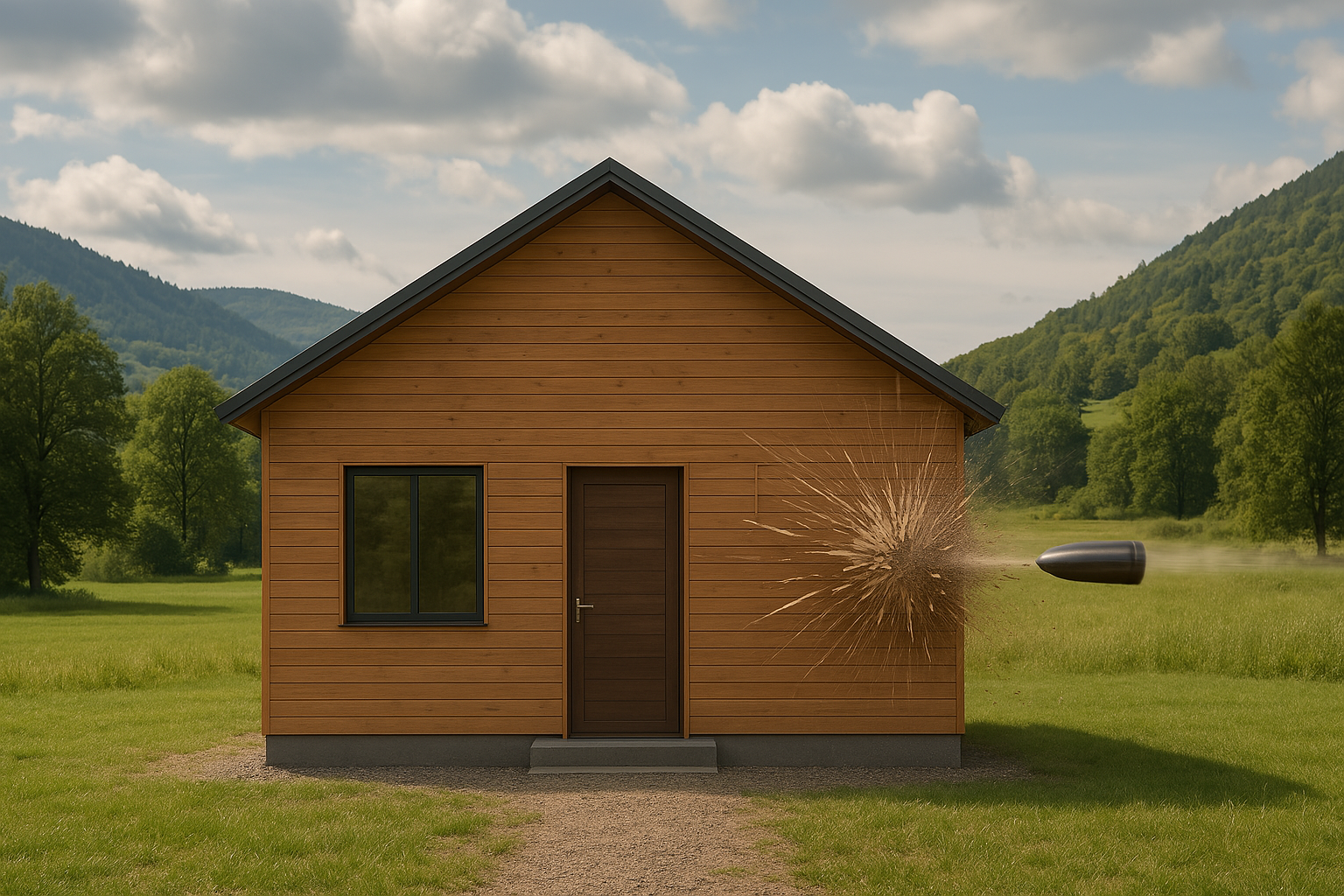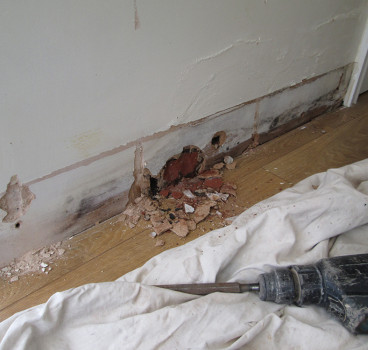Could “Superwood” be used to create a bulletproof house?
It might be time to forget everything we know about wood. InventWood, a US-based company, has developed a revolutionary modified product called Superwood that it claims is stronger than steel. This is not a simple improvement - it's a new material so resilient it has demonstrated properties that could one day make a house resistant – even to a bullet, writes John Ridgeway.
The key to Superwood’s remarkable properties lies in a two-step process that fundamentally changes wood at a cellular level, transforming it into a high-performance composite material. It does not replace wood’s natural fibres, but rather re-engineers them to unlock latent strength. The process begins with a chemical bath where wood is boiled in a solution to partially remove lignin, the complex organic polymer that acts as the binder or "glue" holding the wood's cellulose fibres together. Lignin gives wood its rigidity, but also its inherent structural limitations, so its partial removal is a crucial first step.
After the chemical treatment, the wood is hot-pressed under immense pressure. This action collapses the hollow cell walls of the wood, bringing the remaining cellulose fibres into a much tighter, denser formation. As the fibres are pressed together, they form new, incredibly strong hydrogen bonds. This is the heart of the innovation.
Traditional wood can be thought of as a bundle of hollow, individually weak straws, but the Superwood process effectively turns that bundle into a dense, solid block where the fibres are now interlocked and bonded in a far more robust configuration. The result is a material that is up to 12 times stronger and 10 times tougher than natural wood, with its density approaching that of a high-performance composite. This is not just a modification; it is a complete restructuring of the wood's internal architecture, creating a new material that retains the natural look and feel of wood while delivering a level of performance previously unimaginable.
The remarkable properties of this new material
InventWood’s most striking claim is that Superwood is stronger than steel. While this might sound like hyperbole, it is a statement based on the material's strength-to-weight ratio, which is up to 10 times greater than that of steel. This means that a component made from Superwood would be significantly lighter than a steel equivalent, but would possess comparable or superior structural integrity. This combination of strength and low mass is a holy grail for a wide range of industries, but for construction, it promises lighter, more efficient and potentially more resilient structures.
The material's properties extend well beyond its strength. In controlled laboratory tests, a bullet-like projectile fired from a gas gun was easily able to pierce a standard piece of natural wood. The same projectile, fired at a similar early-stage Superwood sample, was stopped entirely. While this was a controlled experiment and not a full ballistic test, it demonstrated the material’s incredible density and energy absorption capabilities. It opens a door to potential high-security and military applications, such as constructing light, rapidly deployable battlefield shelters or creating robust cladding for sensitive structures that could protect against ballistic threats.
In addition to its immense strength and surprising resistance to high-impact forces, Superwood has been given a Class A fire rating. This makes it highly fire-resistant and a far safer building material than traditional timber, addressing one of wood's most significant historical vulnerabilities. Furthermore, the material is also highly resistant to rot, pests and moisture, giving it a durability that allows it to be used in external applications without the need for chemical treatments. These combined attributes - strength, impact resistance, fire resistance and durability - position Superwood not just as an alternative, but as a superior choice to traditional materials in many applications.
The journey from a scientific breakthrough to a commercial product is fraught with challenges, but InventWood has systematically navigated this path. As a spin-off from the University of Maryland, the company's innovation is rooted in years of academic research and has a strong foundation of scientific credibility. The co-founder and executive chairman, Alex Lau, has been a key figure in this transition, driving the commercialisation of the technology. The company's mission is to bring this revolutionary material to market at scale, a process that requires significant investment in manufacturing infrastructure.

InventWood recently secured funding to open its first large-scale manufacturing facility. This represents a crucial step in moving Superwood from a laboratory curiosity to a viable commercial product. The company’s initial market strategy is a pragmatic one, focusing first on high-value, non-structural applications like cladding and exterior facades. This allows them to build market presence, refine manufacturing processes and establish the material's performance credentials. As the technology matures and production scales, the company aims to move into more structural applications, ultimately competing with steel and concrete in the most demanding segments of the construction industry. This measured approach demonstrates a clear understanding of the market dynamics and the necessary steps to achieve their long-term vision.
Related read: Learn about other smart materials revolutionising construction.
A future built on wood
The advent of Superwood carries broader implications that could revolutionise not only how we build, but also what we build with. By creating a high-performance wood that is stronger than steel, InventWood has fundamentally altered the conversation around materials. Structures could become lighter and more efficient, reducing the foundational requirements for buildings and potentially lowering construction costs. The sustainability advantages are also immense. The manufacturing process for Superwood has a significantly lower carbon footprint than steel or concrete production. By using a renewable resource and creating a durable, long-lasting material, InventWood offers a powerful tool in the fight against climate change within the construction sector, one of the world's largest carbon emitters.
The development of Superwood also signals a broader shift in the perception of wood itself, from a "soft" or "traditional" material to a high-performance engineered product. This could drive a new wave of innovation in wood technology, leading to new building techniques and architectural designs that use the unique properties of these advanced materials. There are still hurdles to overcome, of course, including scaling production to meet demand, managing the costs of the chemical process and navigating the complexities of building regulations. However, the potential is clear. The days of a simple wooden house may be over, replaced by a new era of robust, resilient and highly sustainable structures built from a material we thought we already knew.
Additional Blogs

How construction can cut Its carbon footprint by caring for soil
Soil is often dismissed as mere dirt, but it is one of the planet’s most powerful carbon stores, holding more than all of the world’s forests combined. Yet in our rush to build, pave and develop, we...
Read moreWhat is bridging damp? How it happens and how to fix it
Bridging damp happens when moisture finds a path around the building’s damp-proof course (DPC) so it reaches your internal walls and skirting. If you see damp patches rising above the skirting or...
Read more

The silent death of the fixed-price contract
For decades, the fixed-price contract has been the backbone of construction procurement. It promised certainty with a defined scope, an agreed sum and a clear transfer of risk from client to...
Read more